For many Kiwis, driving from Auckland to Wellington in the shortest possible time, with the fewest possible stops, seems to be the default criteria for the real-world worth of an electric vehicle (EV). Why? We’re not sure. But it’s a thing, if reader feedback and social media comments are to be believed.
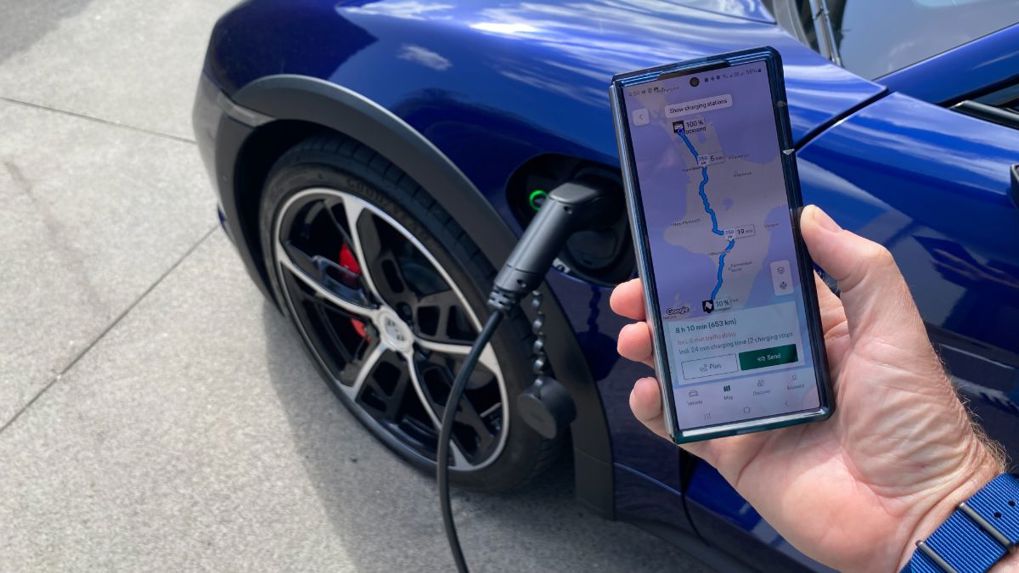
It’s good to have goals; today we have two. The first is to deliver a Porsche Taycan Cross Turismo 4S from Auckland to Wellington, to the just-opened Porsche Centre on the capital’s Cambridge Terrace.
The second is to try Porsche’s clever route/charging management software on a proper road trip, making maximum use of the Taycan’s extremely fast charging capability (over 300kW in the right conditions, or as much as any DC station in NZ can deliver right now).
Hang on, make that three goals. The other one is to see if we can do the trip with the equivalent of one stop… like you could in a petrol car. Yes, we know some petrol cars could do it in one hit, but nobody should drive that long without stopping. Nobody should really drive that long with only one stop either, but it’s a nice round number. And, well, see that first paragraph above.
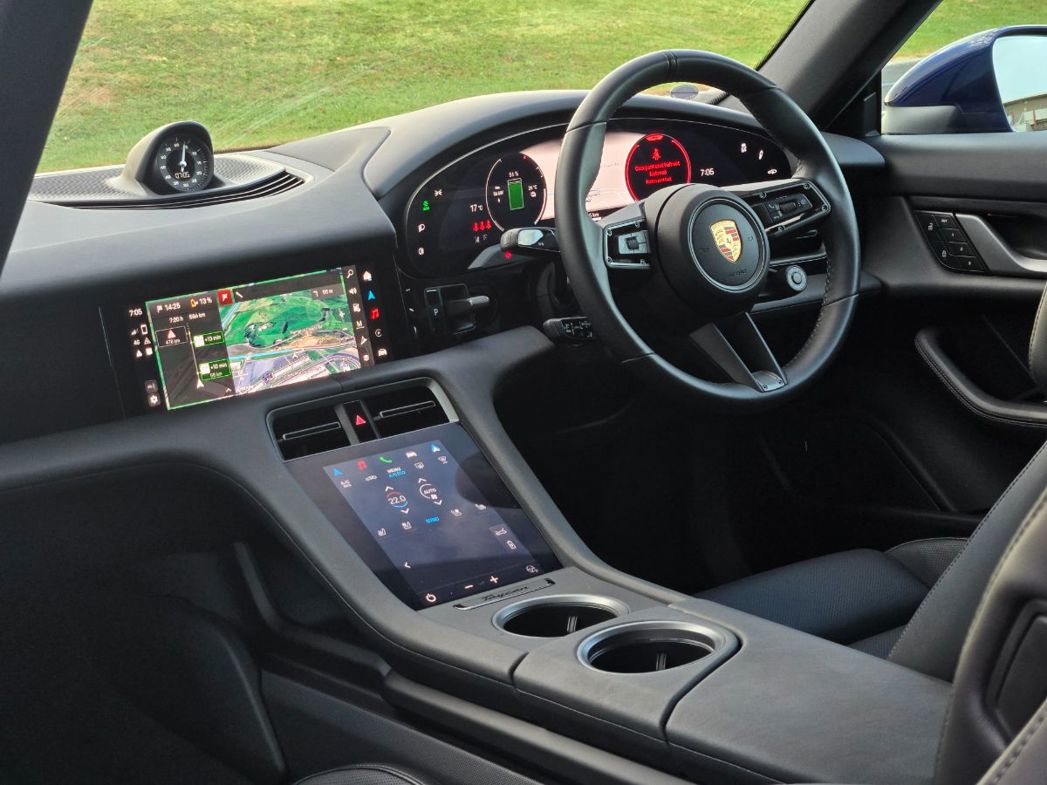
The Cross Turismo 4S is the SUV version of the Taycan (a car we’ve tested previously, have a look here) and not even the one with the biggest range. Its maximum WLTP figure of 610km is well beaten by the rear-drive Taycan, with 678km. Real-world range on a trip like this, remembering open-road driving is harder on EVs than around-town, is a bit over 500km.
The idea is to see if we can do Auckland to Wellington with the equivalent of one stop… like you could in a petrol car.
The Porsche Connect system’s live services include a “My Porsche” mobile app that gives remote control of many vehicle functions, plus information about battery charge and the like.
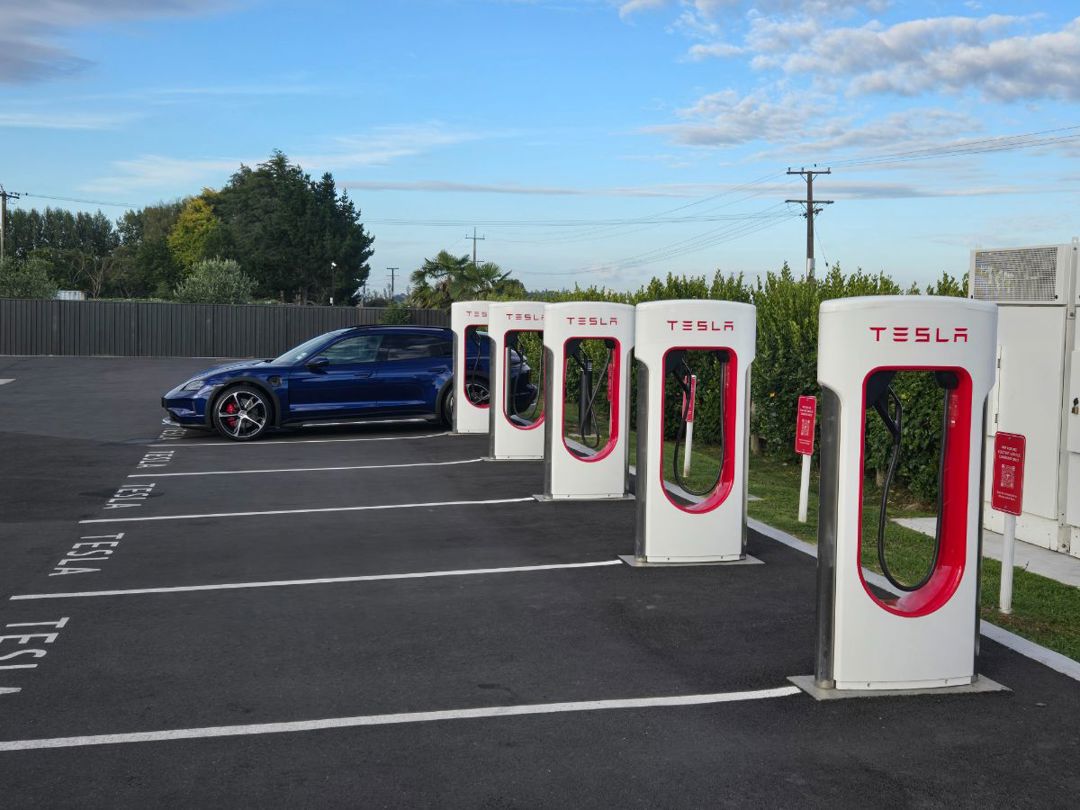
Yes, lots of cars have similar technology. But a nifty part of that digital environment is a Google-based route planner that can not only find the best way from A to B, but also identify the plug-in stops that take best advantage of the Taycan’s charging ability, and even get you to your destination at a battery level you can specify in advance. It might also do it in a way you wouldn’t necessarily think of without Porsche-science.
Total charge time of 24min is deeply impressive for an 8-hour-plus EV journey; confirmed, sent to the car from the phone and we’re away.
Case in point: according to the My Porsche route planner, our start point on the North Shore of Auckland to the Porsche Centre in central Wellington is 653km - via National Park, because it’s already taken the Desert Road closure into account.
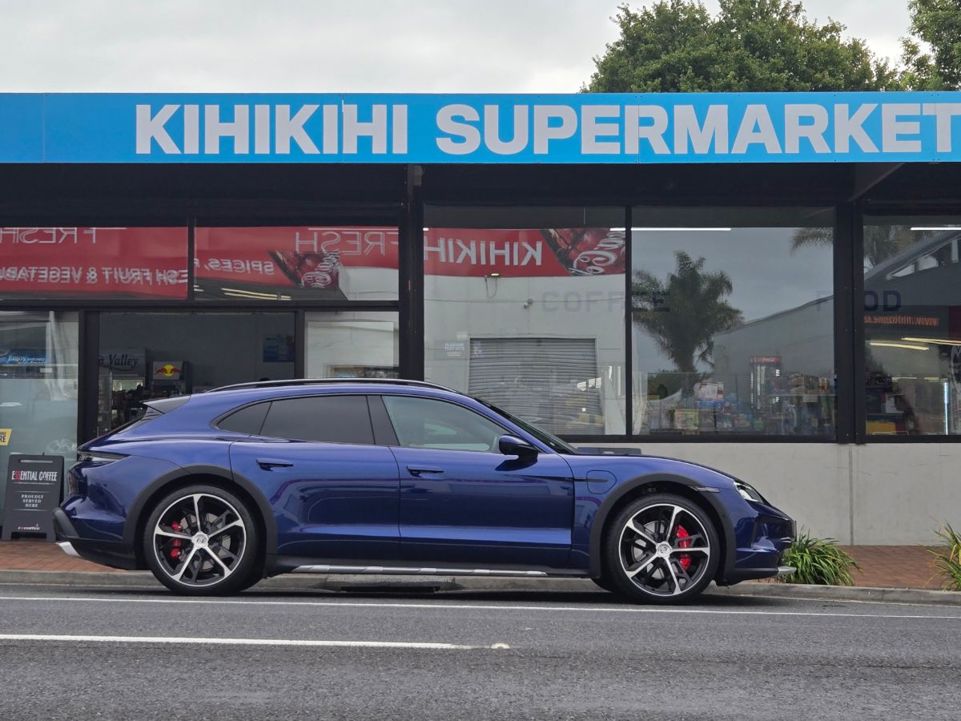
Setting off with 100% charge, the app is keen on us plugging in at the 250kW Tesla Supercharger in Hamilton (these stations are now open for non-Tesla use, in case you didn’t know) for a mere 5min, which will then get us to another Supercharger in Taihape for an 18min charge. Onward to Wellington, where we should arrive with 10% remaining.
The seats are sublime and the powertrain/chassis can be as relaxed or sporty as you want at the touch of a button.
Total charge time of 24min is deeply impressive for an 8-hour-plus EV journey; confirmed, sent to the car from the phone and we’re away.
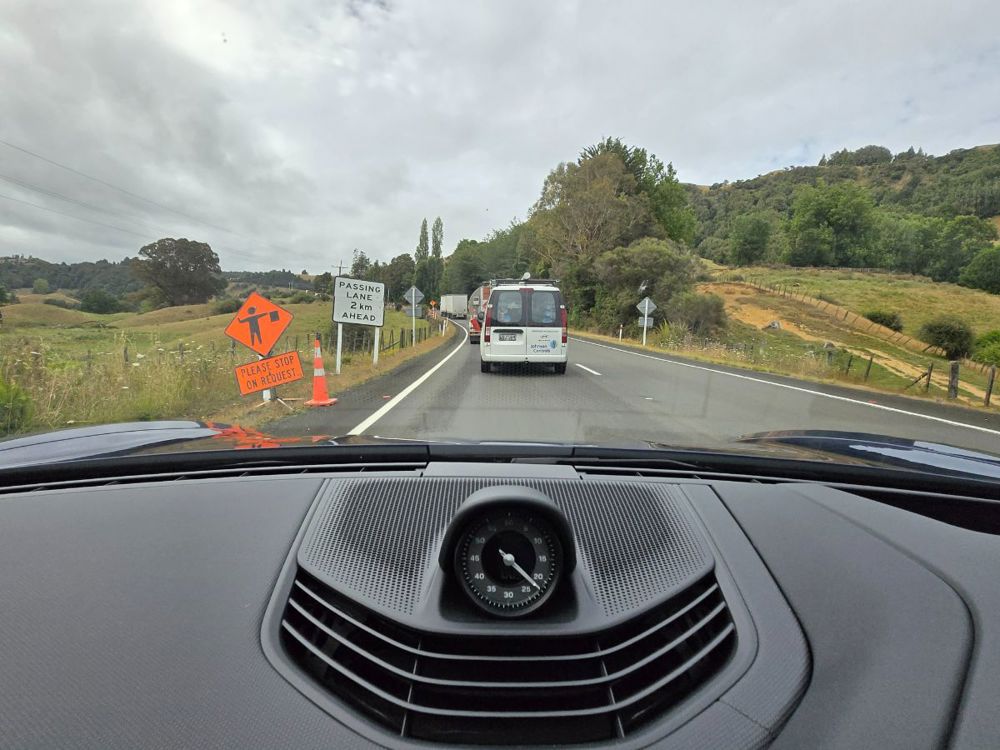
Another clever thing about the Porsche system is that once the route is embedded in the car, it knows when you’re approaching a plug-in stop and will warm and prepare the battery for optimum charging.
It all works beautifully, until I reach the Hamilton Supercharger site and find that while the Tesla app (on my phone and nothing to do with the car, just to be clear) is recognising my location and credentials, it won’t recognise that there are any chargers there; even though I’m standing in front of empty bays. Very nice they look, too.

Not a Porsche problem, obviously. Perhaps not even a Tesla problem, because a staff member from Porsche NZ did a very similar trip last month and used the Tesla sites with no issues. So let’s say it’s a me-problem; although I’ve had and used the app for a long time, it’s the first time I’ve tried to charge a “non-Tesla vehicle” with it. Can’t solve it and spend too much time trying.
I take a look at the distance to Taihape and see I could just make it. But I decide to stick to the Taycan plan as best I can and backtrack 10min to a nearby ChargeNet Hyper Charger, where it takes just 7min to get the car back up to 80%.
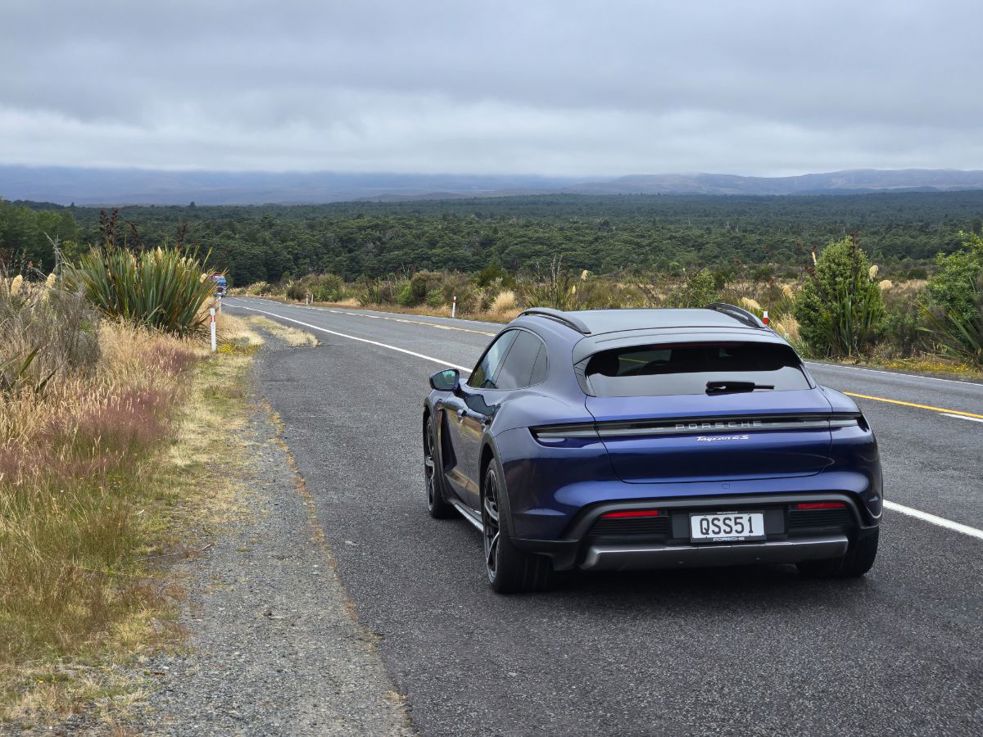
A sensational EV, this; don’t know why everybody doesn’t drive them. Oh, right: $255,900.
The seats are sublime and the powertrain/chassis can be as relaxed or sporty as you want at the touch of a button. I run the car in Range mode a lot of the time (Porsche’s version of Eco), because it’s still really quick; for overtaking there’s a “push to pass” button on the steering wheel that gives you maximum power for 10 seconds (and counts it down on the instrument panel!).
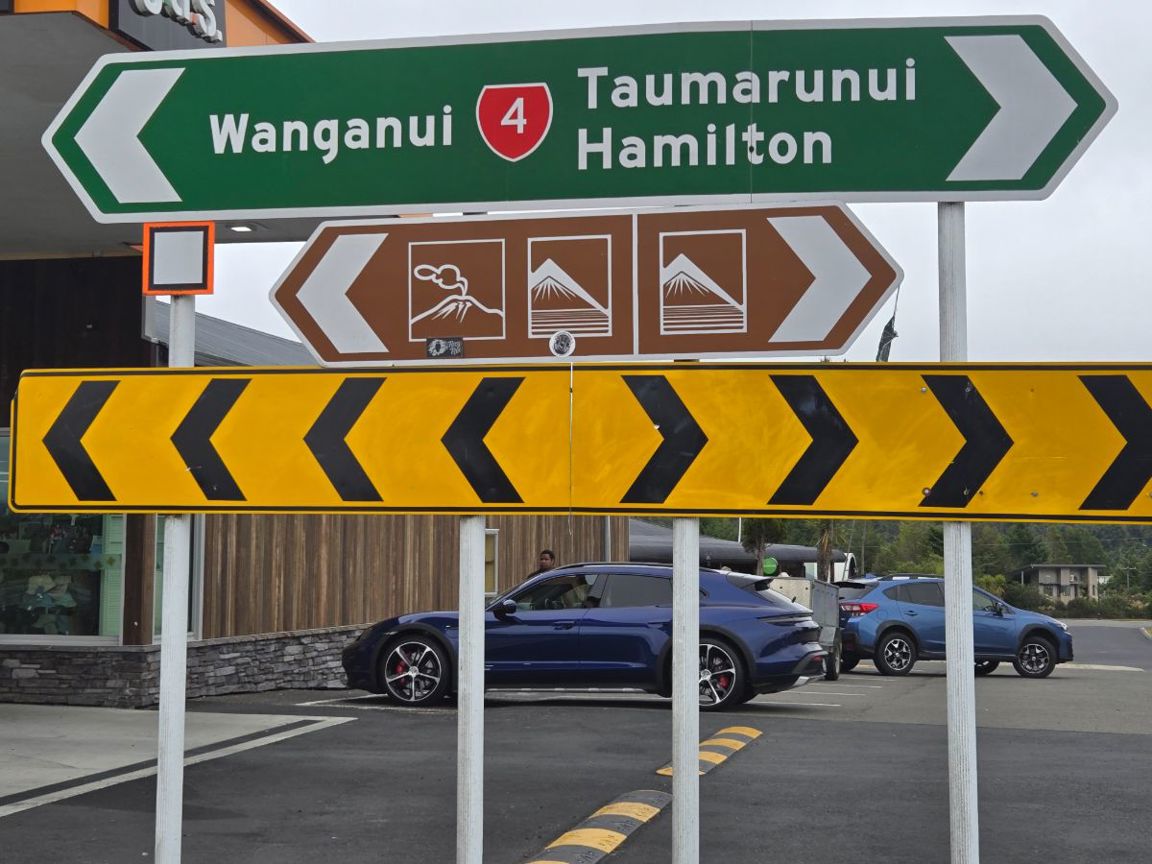
There’s also a quick flick to Sport or Sport Plus for the winding stuff. This is not supposed to an economy run; that would be a waste of Taycan.
Haven’t given up on the Tesla thing and as I approach Taihape, the battery is warmed and the indicator is suggesting the near-empty power unit is ready to accept up to 289kW of charge rate! Which is more than the Tesla Superchargers can deliver, actually.
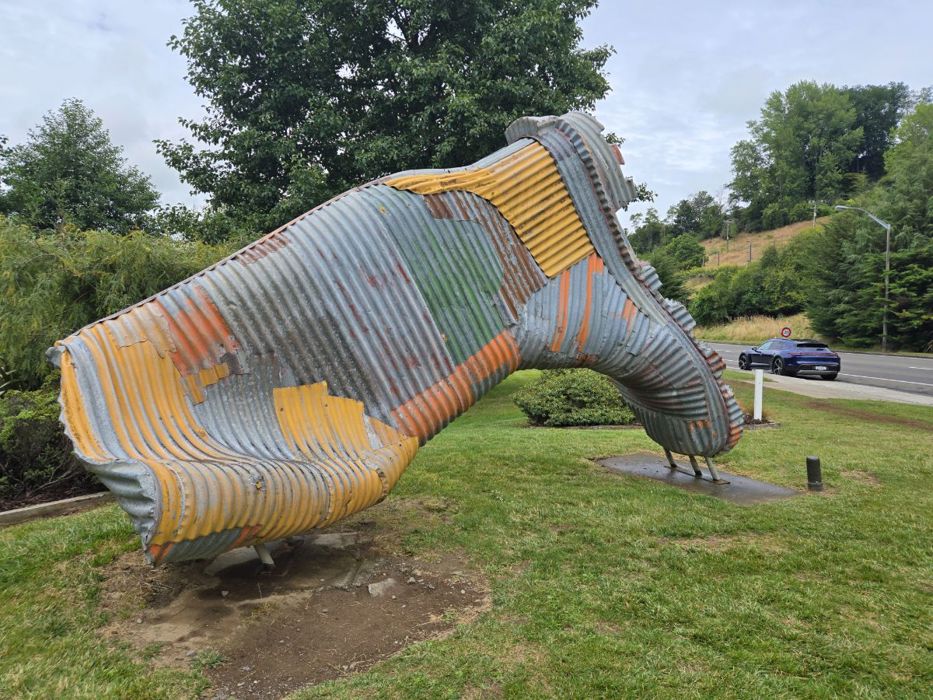
And… no luck here, either. But it’s measure of how good the Kiwi infrastructure now is that there are least two other options within a few km: ChargeNet (alas, not a 300kW Hyper Charger but a 50kW unit) or a 75kW BP station. I choose the BP, not just because of the higher rate, but, well… Wild Bean Vegan Buttery Chicken pie.
The food is a success, the charge slightly less so; shortly after plugging in, there’s a message from the car telling me the machine is limiting the rate of power delivery, which is odd because the spot next to me is empty. It’s trickling along at “just” 45-48kW, when it should be 75kW in these conditions.
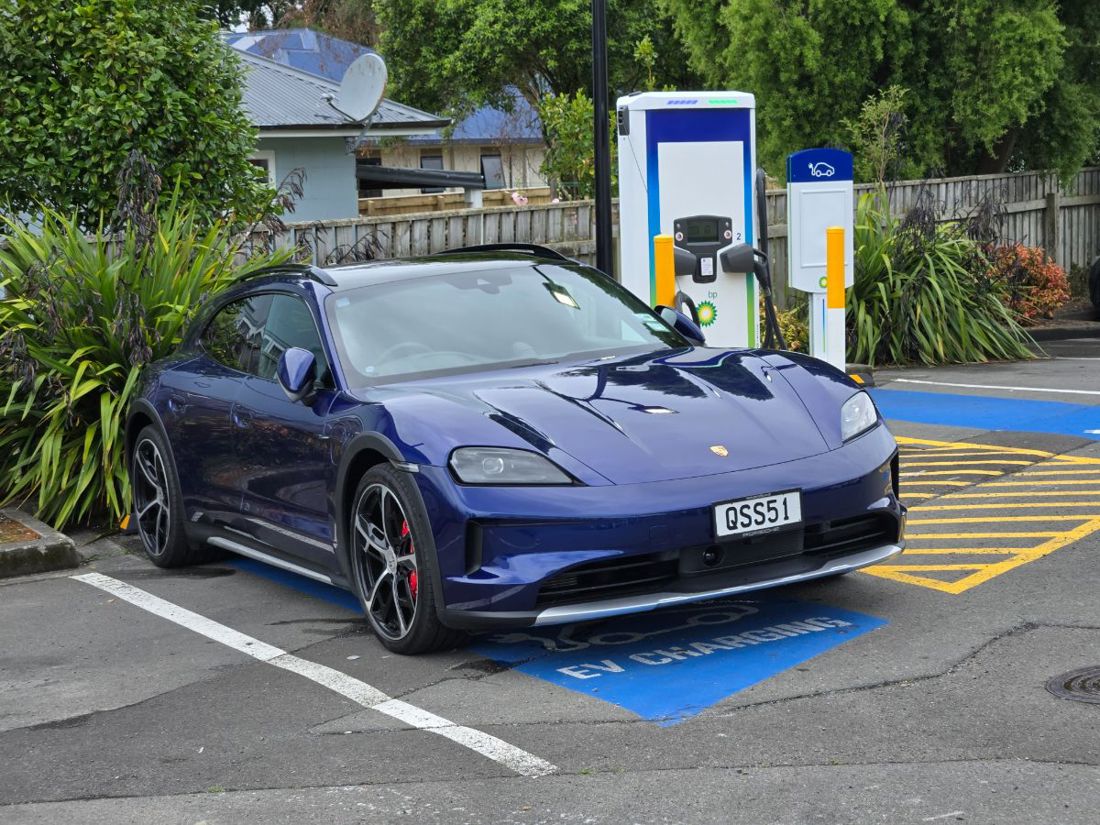
The appropriate charge to get us to Wellington takes an hour, which is more than twice as long as we’d planned; but it wasn’t like I was standing around waiting. I did lunch, went for a wander around the shops, had coffee and more coffee.
Turns out I overdid it a bit anyway, because the route planner recalculates I’ll arrive with 19% charge and so it proves, although horrendous weather past Manawatu, road works and traffic slowing us down all contribute to improved efficiency for the last part of the trip.
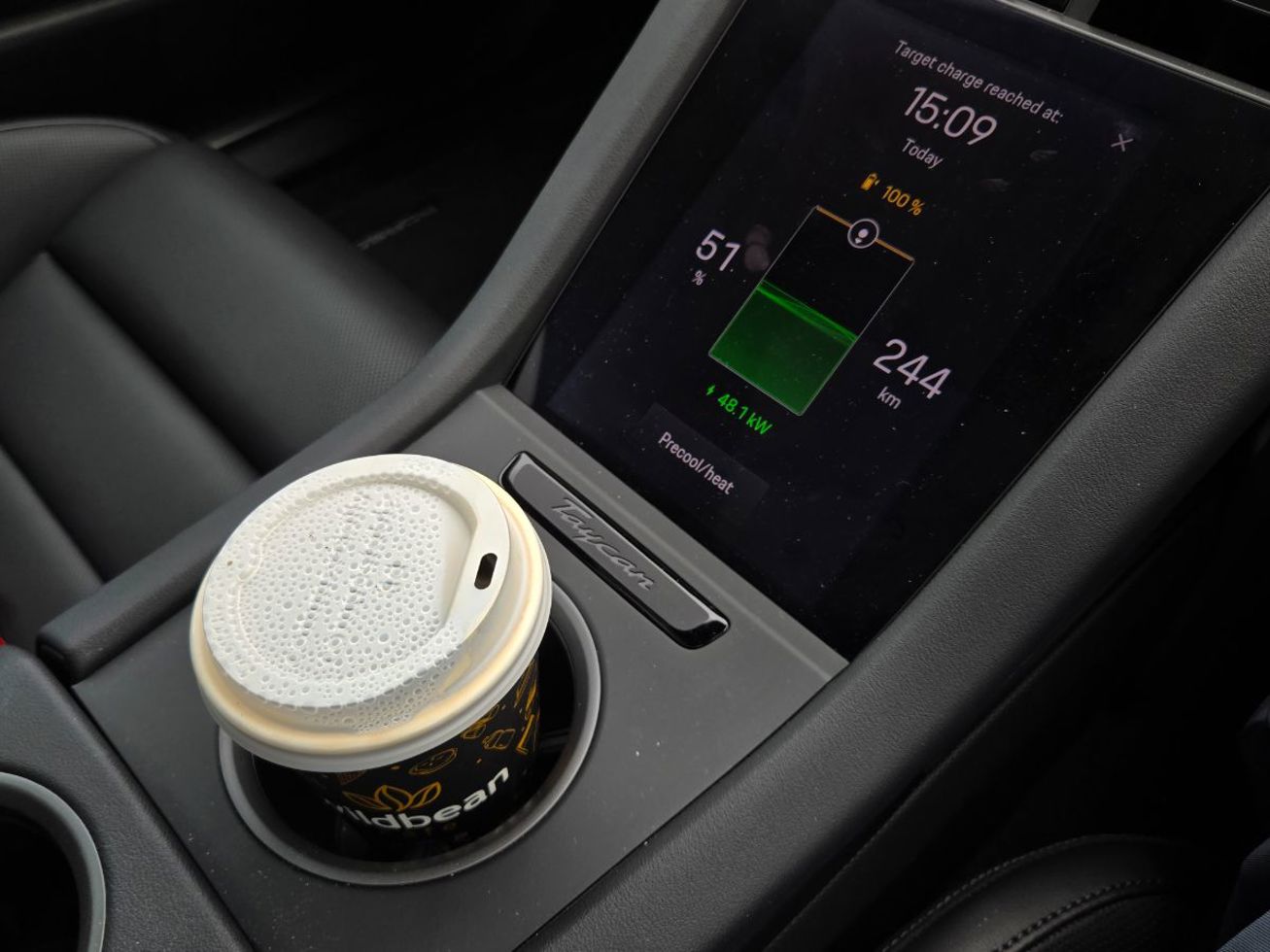
What have we learnt? Well, the Tesla issue interrupted the flow a bit and meant we spent twice as much time charging as we theoretically needed to. But that’s still only just over an hour for a 650km drive and at no point was I just sitting waiting.
If I’d done my homework and ensured the Supercharger app was functional, it’s quite likely I would have taken that time anyway. It felt right.
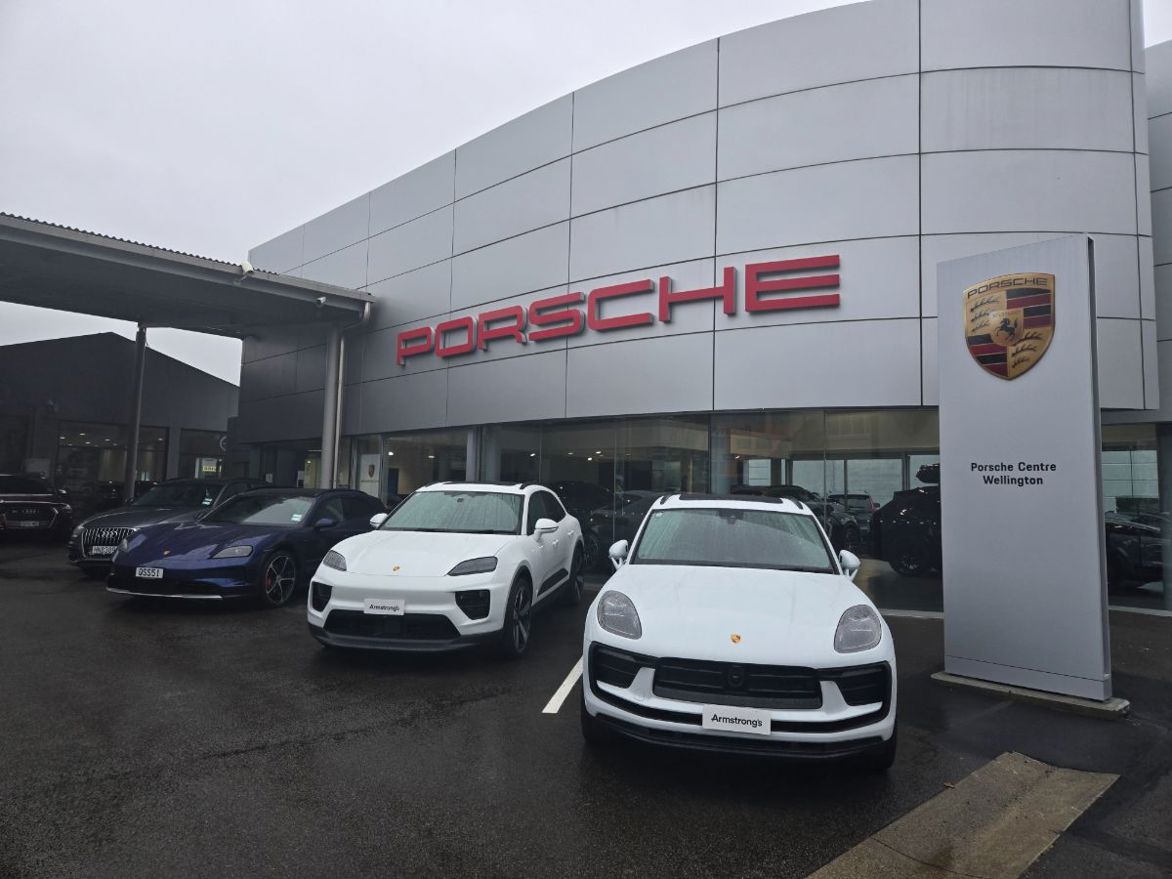
If I’d known I wouldn’t have the use of the Superchargers, I would have played around with a different strategy (or asked the app to create one), probably taking advantage of the ChargeNet 300kW station at Bulls, near Palmerston North.
The final stats: we did that 653km at an average speed of 70km/h (about what you’d expect if you travel at the posted speed limits and can overtake at will) and an average power consumption of bang-on 20kWh/100km. Incidentally, at BP charge rates of 75c/kWh that would be roughly $100 for the trip.
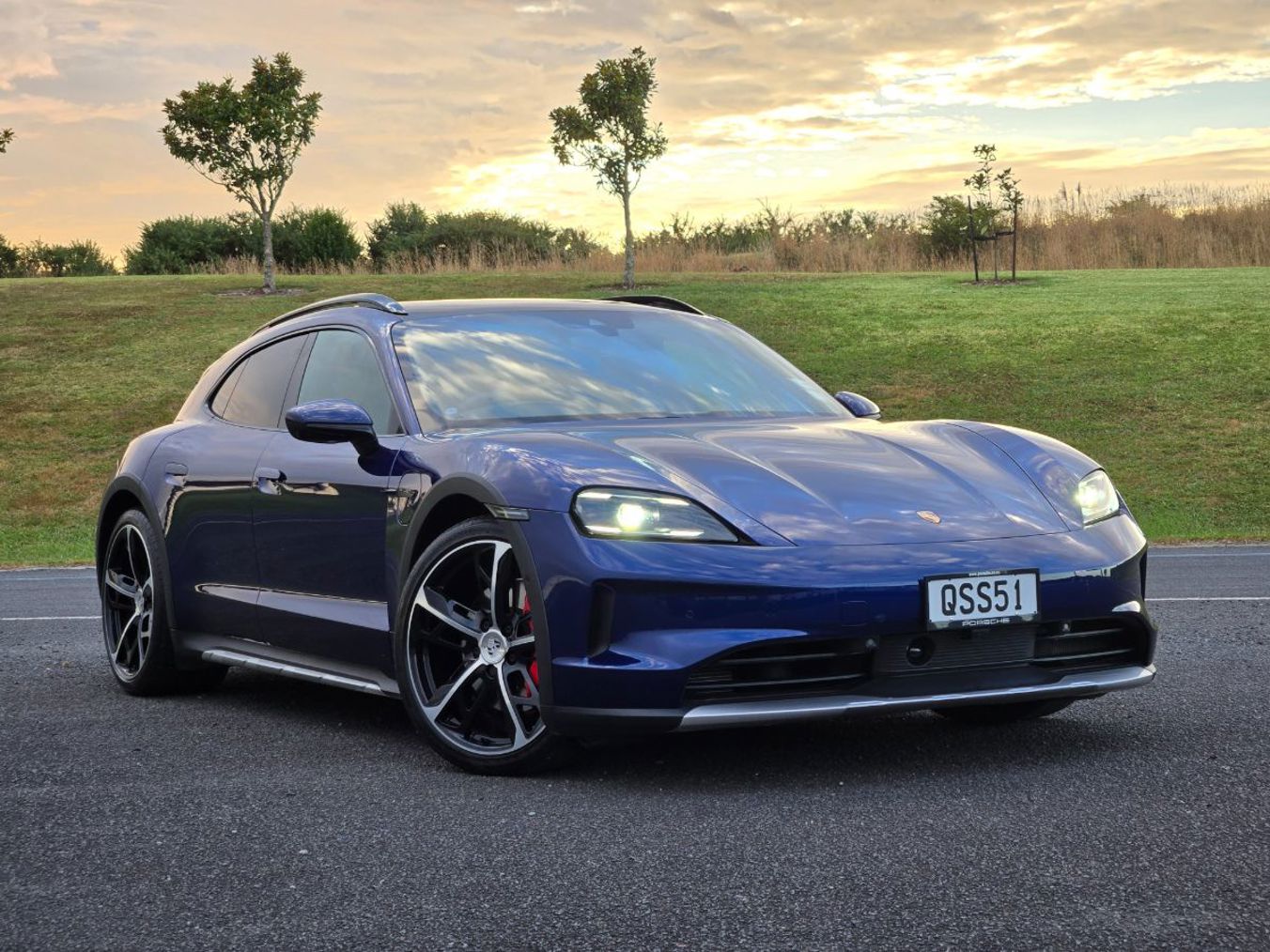
True, an EV trip does take a little more planning than a petrol car, but the My Porsche app took care of a lot of that for us. Even with our Tesla troubles and getting unexpectedly saddled with “slow” charging, Auckland-to-Wellington with one stop would have been completely doable in the Taycan (we slipped that extra boost in at Hamilton, remember). That’s true of any EV with 500km real-word range in fact, although you may not jump out at Cambridge Terrace feeling anything like as energised.
Postscript: back home a week later and without any subsequent use, updating or prompting, the Tesla app is suddenly working and opening up a whole world of Supercharging to me. So it was a Tesla problem, meaning it wasn’t a me problem. Porsches are never a problem.





